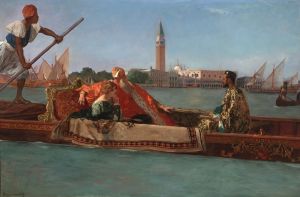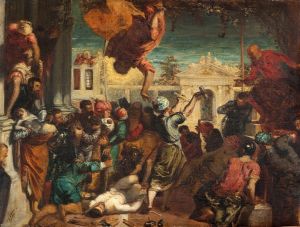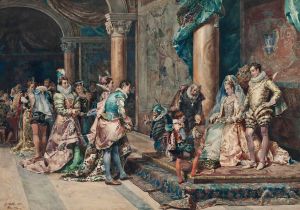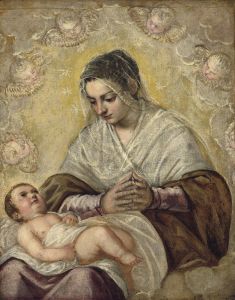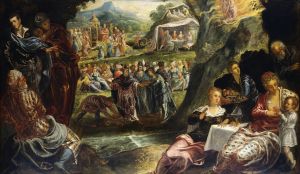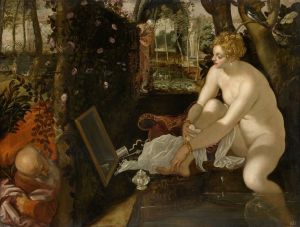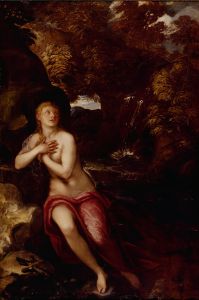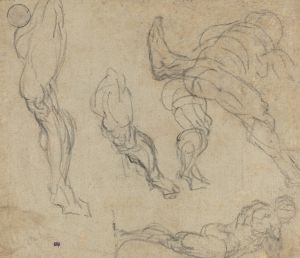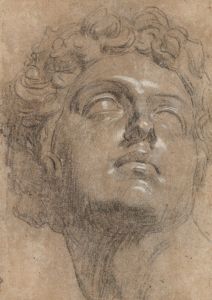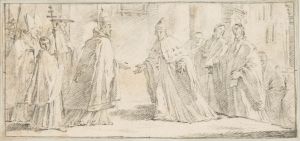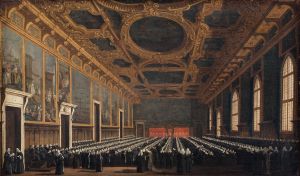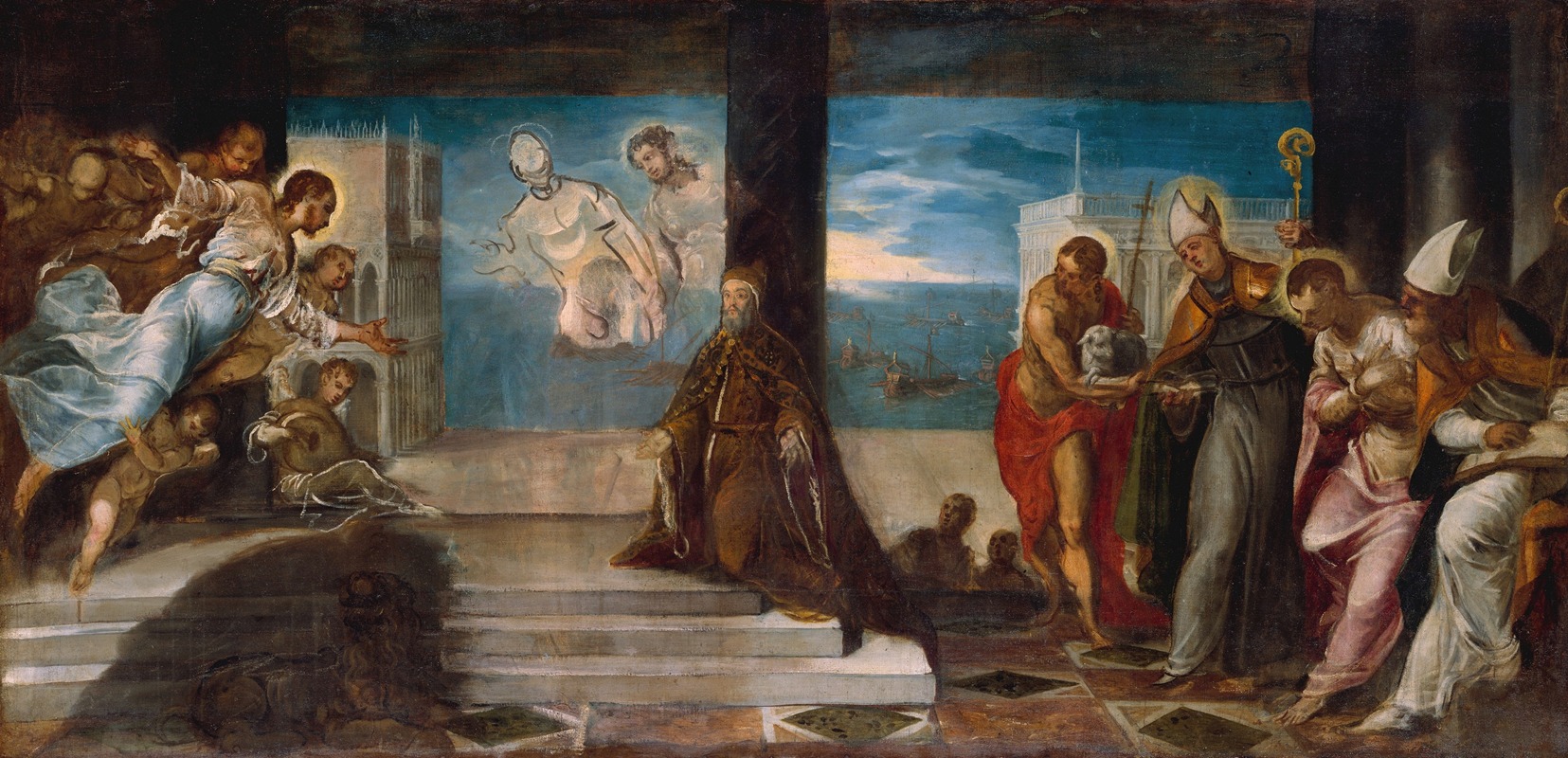
Doge Alvise Mocenigo Presented to the Redeemer
A hand-painted replica of Jacopo Tintoretto’s masterpiece Doge Alvise Mocenigo Presented to the Redeemer, meticulously crafted by professional artists to capture the true essence of the original. Each piece is created with museum-quality canvas and rare mineral pigments, carefully painted by experienced artists with delicate brushstrokes and rich, layered colors to perfectly recreate the texture of the original artwork. Unlike machine-printed reproductions, this hand-painted version brings the painting to life, infused with the artist’s emotions and skill in every stroke. Whether for personal collection or home decoration, it instantly elevates the artistic atmosphere of any space.
"Doge Alvise Mocenigo Presented to the Redeemer" is a notable painting by the renowned Italian Renaissance artist Jacopo Tintoretto. This artwork is a significant example of Tintoretto's mature style, characterized by his dramatic use of perspective and light, as well as his dynamic compositions. The painting is housed in the Sala del Collegio of the Doge's Palace in Venice, Italy, a location that underscores its historical and cultural importance.
Jacopo Tintoretto, born Jacopo Robusti in 1518, was a prominent figure in the Venetian school of painting. Known for his energetic and innovative approach, Tintoretto's works often feature bold compositions and a masterful use of chiaroscuro, the contrast between light and dark. His style was influenced by the works of Titian and Michelangelo, yet he developed a distinctive approach that set him apart from his contemporaries.
The painting depicts Doge Alvise Mocenigo, who served as the Doge of Venice from 1570 to 1577, being presented to the Redeemer, a representation of Jesus Christ. This subject matter reflects the intertwining of religious and political themes typical of Venetian art during the Renaissance. The Doge, as the chief magistrate and leader of the Republic of Venice, was often depicted in art as a pious and devoted servant of both the state and the church.
In the composition, Tintoretto employs his signature dramatic perspective, drawing the viewer's eye towards the central figures. The use of light in the painting highlights the divine presence of the Redeemer, while the Doge is depicted in a posture of humility and reverence. This visual narrative reinforces the idea of the Doge's role as a mediator between the divine and the earthly realms.
The painting is rich in symbolic elements, which were common in Tintoretto's work. The inclusion of angels and other religious figures serves to emphasize the sanctity of the scene and the divine approval of the Doge's leadership. Tintoretto's skillful rendering of fabrics, textures, and expressions adds to the overall impact of the painting, showcasing his technical prowess and attention to detail.
"Doge Alvise Mocenigo Presented to the Redeemer" is not only a testament to Tintoretto's artistic genius but also a reflection of the political and religious climate of 16th-century Venice. The painting serves as a visual document of the era, capturing the essence of Venetian identity and the city's devotion to both governance and faith.
The artwork remains an important piece within the Doge's Palace, contributing to the rich tapestry of Venetian art and history. It continues to be studied and admired for its artistic merit and historical significance, offering insight into the cultural landscape of Renaissance Venice and the enduring legacy of Jacopo Tintoretto.





